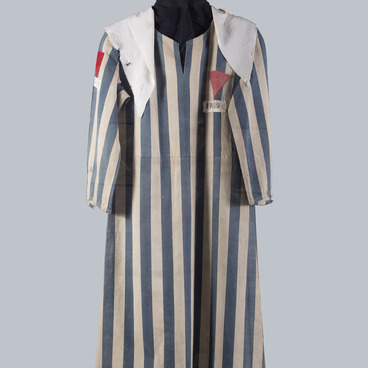The medical assistant Grigory Syrkov participated in the Great Patriotic War. He was imprisoned in a camp in Hammelburg that was intended for Red Army officers captured by the Nazis. There, he joined the resistance movement.
During the Great Patriotic War, over 18,000 Soviet officers were registered at the camp. In the first months, Grigory Syrkov was assigned to work in a revier — the camp infirmary where medical personnel were appointed from among the prisoners.
The prisoner-of-war camps were considered to have better conditions than the concentration camps. The difference can even be seen in the terms. In the former, people were held, and in the latter — concentrated. However, the living conditions were by no means satisfactory. On average, an inmate was expected to live and work for about nine months.
The insufficient and inadequate medical care in the camps hindered the recovery of prisoners. They suffered from dystrophy, as well as typhus fever, tuberculosis, and other infectious diseases. Regular inspections were conducted in the barracks to identify those unfit for work: the weak were sent to the gas chambers.
Food was scarce. The prisoners were given bread made of millet hulls and sawdust. In addition, the camp had a quarantine system, and every newcomer was kept in an isolation cell for six to eight days without water or food.
Extreme stress and brutal conditions led to mass deaths. Grigory Syrkov recalled, “Corpses of prisoners were taken out on carts in groups of six to ten people. They were stacked in a pit of a hundred corpses and buried only after that. The mortality rate was enormous, with 200 or sometimes 300 people dying every day. Those who lasted longer but were already weak were dragged into the pile where the guards beat them to death with sticks. At best, the weak were left out to ‘clear their head’ in the freezing cold.”
The museum collection houses the medical supplies that Grigory Syrkov used to treat his patients in the Hammelburg concentration camp. Among them were 2% morphine hydrochloride, mint tablets, and strychnine nitrate. Such supplies were available in prisoner-of-war camps.
During the Great Patriotic War, over 18,000 Soviet officers were registered at the camp. In the first months, Grigory Syrkov was assigned to work in a revier — the camp infirmary where medical personnel were appointed from among the prisoners.
The prisoner-of-war camps were considered to have better conditions than the concentration camps. The difference can even be seen in the terms. In the former, people were held, and in the latter — concentrated. However, the living conditions were by no means satisfactory. On average, an inmate was expected to live and work for about nine months.
The insufficient and inadequate medical care in the camps hindered the recovery of prisoners. They suffered from dystrophy, as well as typhus fever, tuberculosis, and other infectious diseases. Regular inspections were conducted in the barracks to identify those unfit for work: the weak were sent to the gas chambers.
Food was scarce. The prisoners were given bread made of millet hulls and sawdust. In addition, the camp had a quarantine system, and every newcomer was kept in an isolation cell for six to eight days without water or food.
Extreme stress and brutal conditions led to mass deaths. Grigory Syrkov recalled, “Corpses of prisoners were taken out on carts in groups of six to ten people. They were stacked in a pit of a hundred corpses and buried only after that. The mortality rate was enormous, with 200 or sometimes 300 people dying every day. Those who lasted longer but were already weak were dragged into the pile where the guards beat them to death with sticks. At best, the weak were left out to ‘clear their head’ in the freezing cold.”
The museum collection houses the medical supplies that Grigory Syrkov used to treat his patients in the Hammelburg concentration camp. Among them were 2% morphine hydrochloride, mint tablets, and strychnine nitrate. Such supplies were available in prisoner-of-war camps.


